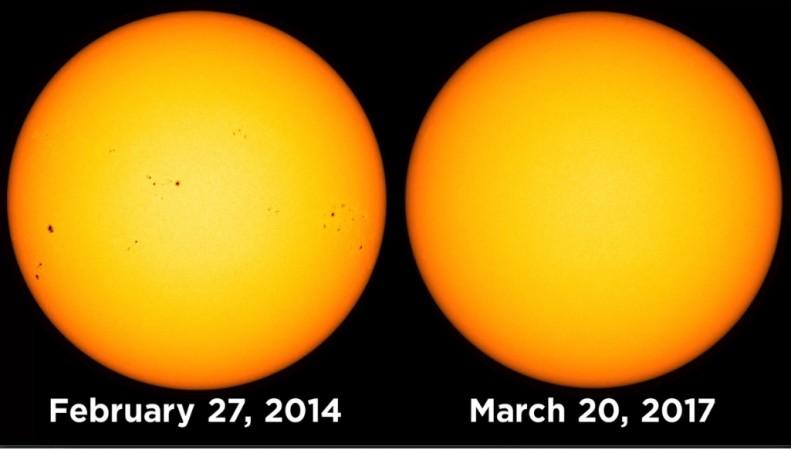
NASA's Solar Dynamics Observatory (SDO) recently sent some images of Sun, which appears to be spotless for 15 days -- the longest duration so far.
Also Read: NASA's Cassini gets up close and personal with Saturn's 'UFO-shaped' Pan moon
This phenomenon is referred to as solar minimum, and the last time a similar feature was noticed in April 2010.
These two images captured by the SDO portray Sun's appearance on March 20, 2017, and February 27, 2014, during the last solar maximum when Sun sported numerous spots, spacedaily.com reported.
"This is the longest stretch of spotlessness since the last solar minimum in April 2010, indicating the solar cycle is marching on toward the next minimum, which scientists predict will occur between 2019—2020," NASA officials wrote in a statement.
Sunspots are dark regions of complex magnetic activity on the solar surface. These spots are used to measure the number of sunspots as an index for solar activity at any given time, according to the spacedaily.com report.
The solar activity is at its peak during solar maximum, and is at its lowest during solar minimum. The solar activity doesn't come to a halt or end due to the depletion in the number of sunspots heading towards the minimum.















